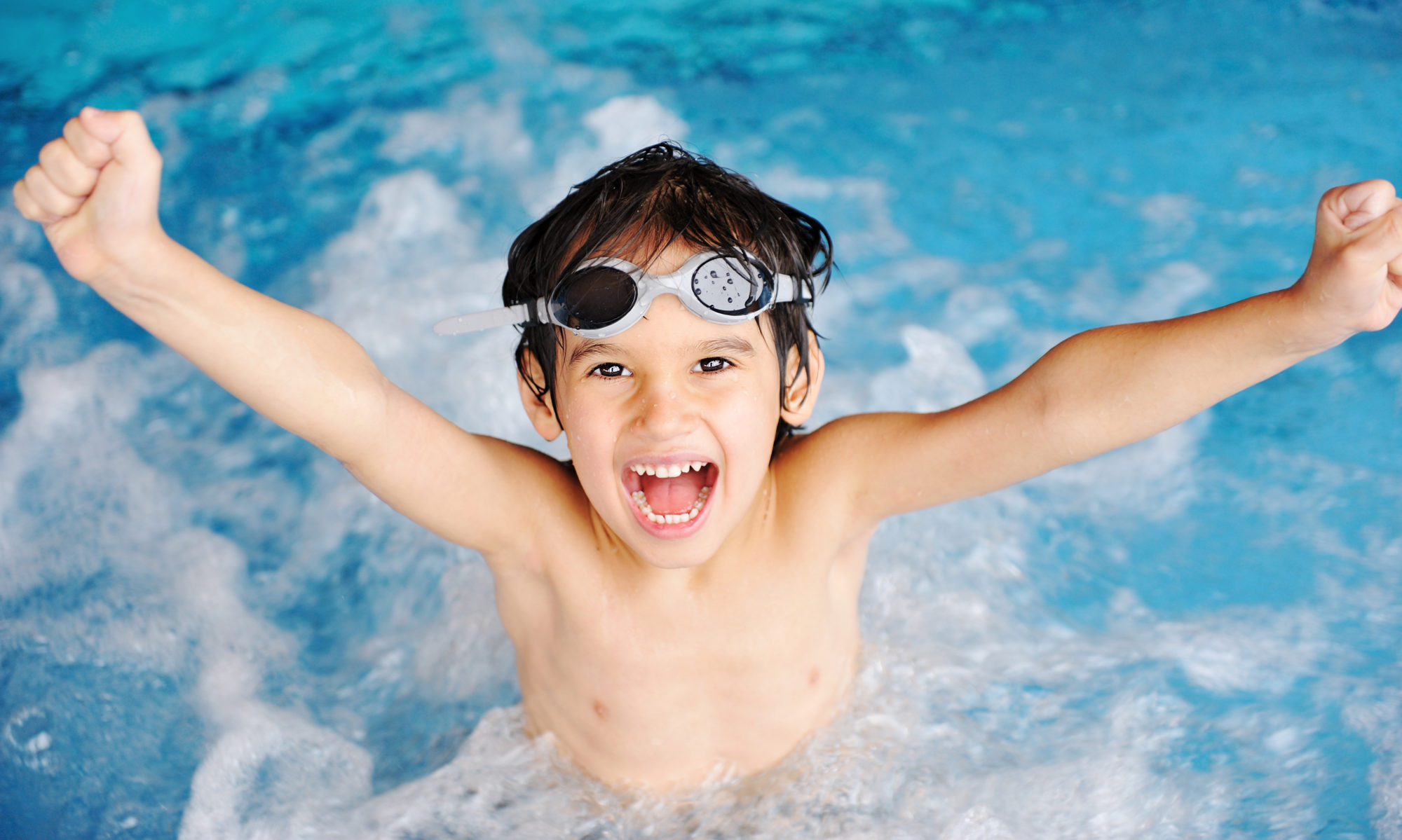How you set the stage for your swimming lessons will have a huge impact on how your kids feels about learning to swim, and your kids’ attitudes will determine whether they’re willing and able to learn. So how do you create an atmosphere that sets you both up for success when you’re teaching your kids to swim?
4 Keys to Creating Atmosphere
A big part of teaching happens before you open your mouth or demonstrate a single swimming skill. It starts with creating an atmosphere that makes your kids receptive to learning. Imagine the look your kids get on their face when they’re watching a clown. (Not a scary clown. A good, funny clown.) That’s the kind of excitement and anticipation you want them to have when you’re teaching them to swim.
Relax.
Plan your swimming lesson for a time when you’re not rushed or tense. Your kids can sense tension in your face and body. They pick it up and become tense, too. You need to be truly relaxed before you start to teach. If you’re not, step back to think happy thoughts or postpone your lesson until you can have the attitude you need to make the teaching and learning experience fun for everyone.
Project confidence, calm, and enthusiasm.
Make sure those feelings come through in your voice. Don’t yell. Reassure your child with jokes, laughter and hugs. Use a patient, nurturing, positive attitude. Remind yourself that making learning to swim fun isn’t only an end in itself; it’s also an important part of setting the stage for deep, thorough learning.
Having your own emotions on an even keel will also help you respond to your child. If your child is afraid or nervous, point out how close those feelings are to excitement. The way you frame his experience for him will help shape how he perceives it. The physical sensations for a little kid trying to go to sleep the night before his birthday aren’t far removed from the ones he feels when he’s getting ready to try something new. Remind him about some of his favorite activities and how there was a moment in his life when he hadn’t tried those activities yet. This could be the moment right before discovering a new favorite.
Be trustworthy. Be honest.
Let your child know what to expect, and follow through. If you say you won’t dunk him, don’t dunk him. Your child needs to be able to trust you in the water so that he’ll have enough confidence to take the risks learning to swim entails. If you break that trust, it will take a long time to regain it. It can make learning to swim very difficult, possibly even leading to a lifelong fear of the water. If you’re a trustworthy teacher, your child will trust that he’s safe in the water.
Tame your expectations.
Don’t expect your child to do it perfectly. Don’t expect him to be fast or coordinated. Don’t expect him to progress without setbacks or plateaus. If you start to get frustrated, take a break. You’re not going to teach effectively when you’re frustrated, your child won’t learn anything, and you’ll transfer your lousy mood and tension to him. Better to hop out of the pool for a few minutes and lie on your backs together watching for animals in the puffy clouds floating by.
